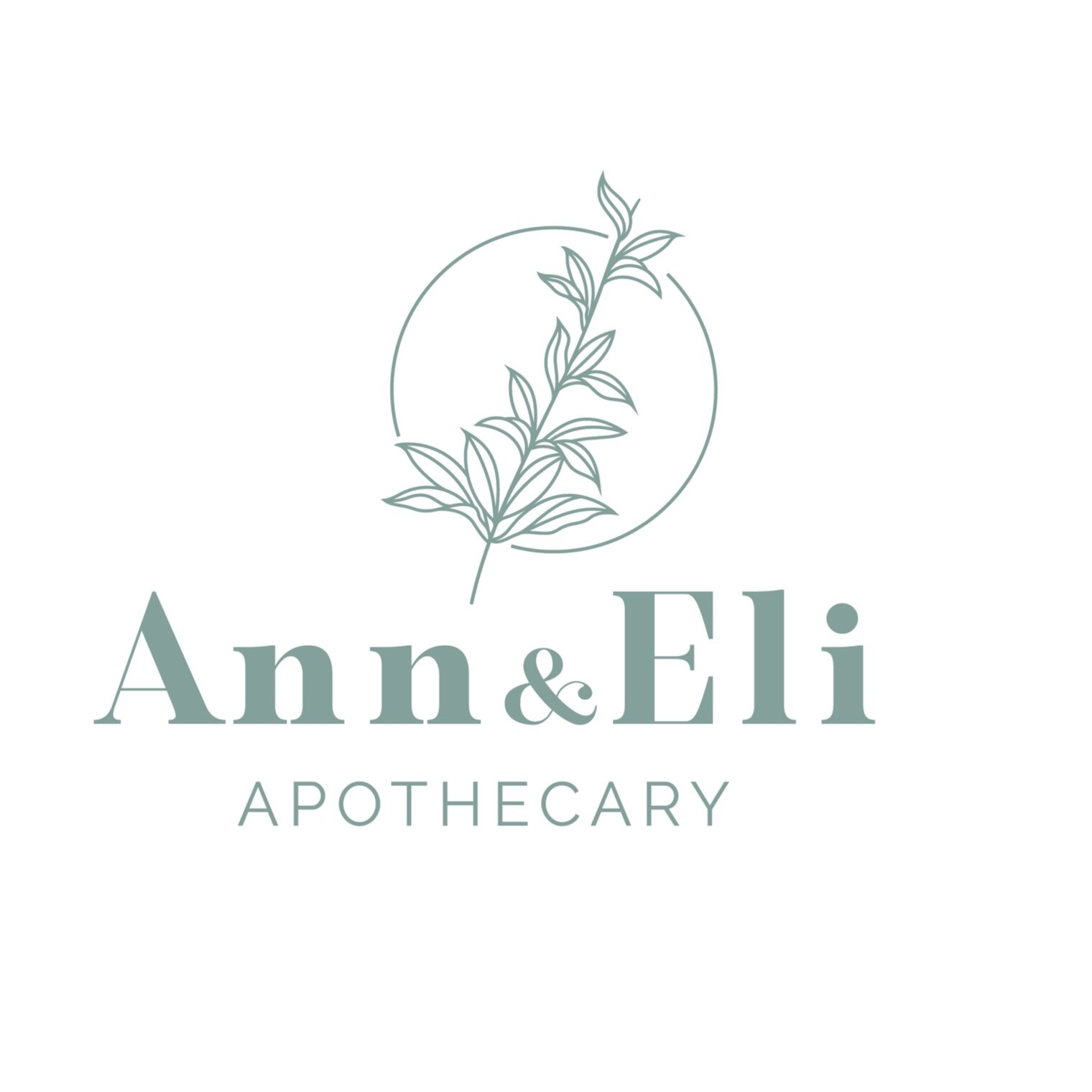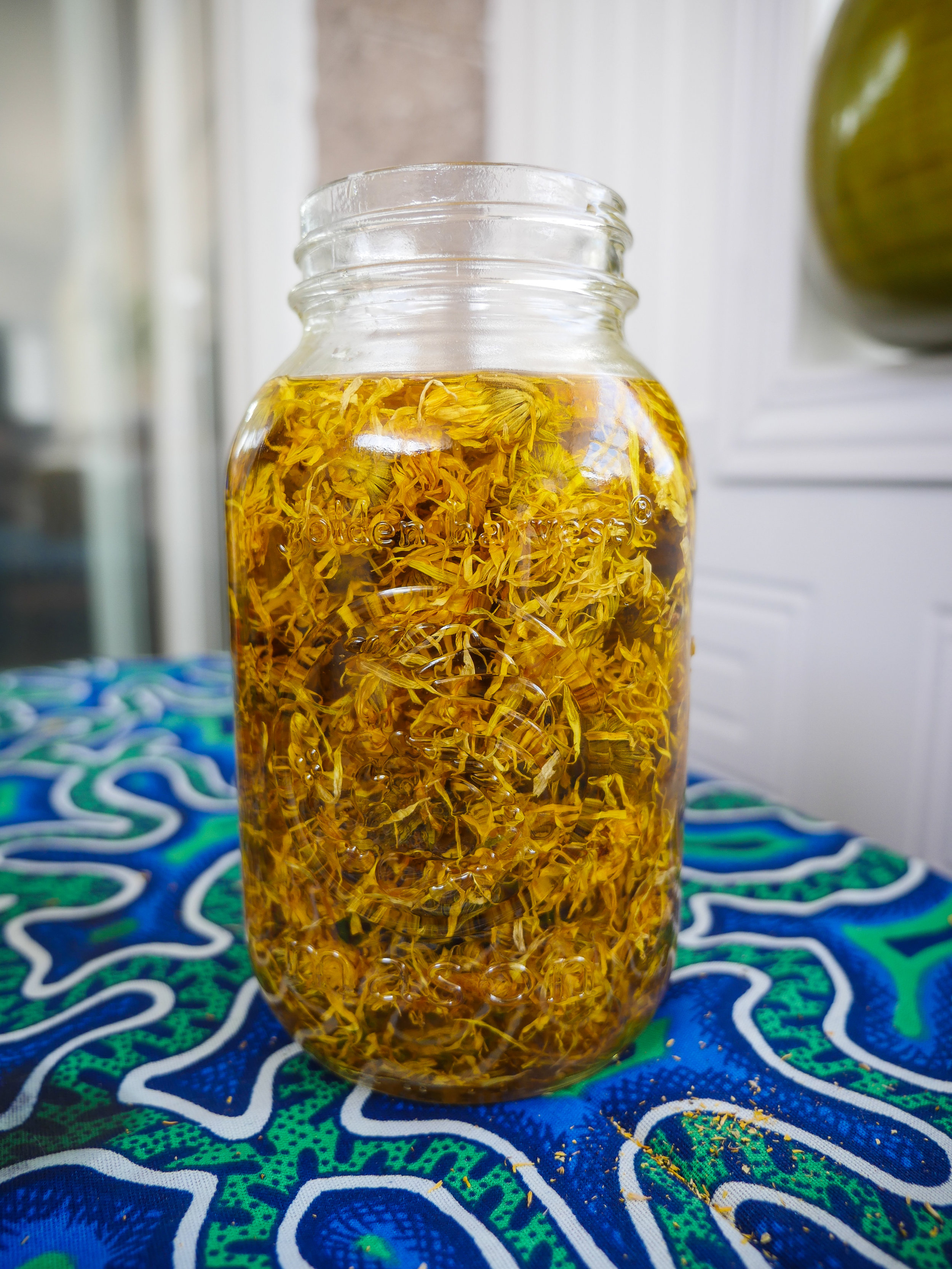How To Make A Medicinal Herbs Infused Oil
One of the easiest ways to benefit from the healing power of the plants surrounding us is to make a herbal infused oil, also known as a macerated oil. It's easy, economical and will help you relieve common ailments naturally.
What is a herbal infused oil?
A herbal infused oil is a vegetable oil that has been infused with medicinal plants for several weeks or hours, depending on the method. During this process, the active ingredients, essence and healing properties of the plants are extracted.
How to use a herbal infused oil?
Depending on the properties of the plant used, a herbal infused oil is used in external applications for therapeutic purposes and as a base in cosmetic products (balm, cream, salve, soap, massage oil ...).
What vegetable should I use?
To make a herbal infused oil, its important to choose a high quality vegetable oil. For maceration, I personally love using olive oil because it has a greater resistance to oxidation and rancidity. But there are other great options such as coconut oil, jojoba oil, sunflower oil, grape seed oil, apricot kernel oil. You can also make a mixture of two or more oils.
Which medicinal plants to choose?
When it comes to medicinal plants, the possibilities are unlimited. It all depends on what you have access to and the desired effects. However, here are some examples of the most common medicinal plants to use in herbal infused oils:
Calendula (Calendula Officinalis): Rich in inflammatory agents and antioxidants, Calendula flowers are widely used in herbal medicine for their calming, healing and regenerating properties. They help relieve minor skin problems such as irritation and inflammation of the skin (eczema, psoriasis, acne), diaper rash, chapped skin, burns, insect bites and cuts.
Lavender (Lavandula angustifolia): Lavender flowers are known for their analgesic, anti-inflammatory, antiseptic, anti-bacterial, sedative and healing properties. In external use, they relieve irritation, wounds and burns.
Comfrey (Symphytum officinale): Comfrey has astringent, healing, vulnerary and anti-inflammatory properties. It helps relieve small burns, cracks, cuts and scars, and is effective in the treatment of muscle pain and rheumatism. In dermatology, it is known for its soothing and emollient properties.
Chamomile (Matricaria chamomilla): Chamomile flowers have antispasmodic, anti-inflammatory, antiseptic and anti-fungal properties. In external use, they are effective in the treatment of skin conditions such as eczema and acne. Soothing, They help soothe and soften the skin, relieves itching and are particularly suitable for sensitive and dry skins.
To make your own infused oil, it’s important to use dry plants of good quality. This reduces the risk of rancidity of the oil, unlike fresh plants, which because of their moisture, would cause a fermentation of the oil.
To make your own herbal infused oil, you need:
Good quality dried herbs
A vegetable oil of your choice
A large sterilized glass jar with lid
A cheesecloth (to filter the oil-plant mixture once the maceration is over)
Vitamin E (to optimize the oil shelf life)
An amber container or bottle to store the infused oil
METHOD:
There are two oil maceration techniques: a traditional method called "solar infusion" and a faster method with heat. I am going to talk about the traditional method which, in my opinion, is simpler and makes it possible to keep the active principles of the plants as much as possible.
In a clean and dry glass jar, place the medicinal plants of your choice (flowers, roots or leaves). The plants should be about half of the container used.
Cover the plants completely with vegetable oil. Stir gently with a clean and dry spoon.
Close the container with the lid and place it on the edge of a window, while making sure not to expose it direct sun light.
Infuse for 4 to 6 weeks. Stir the mixture from time to time to distribute the active ingredients.
Place a cheesecloth on top of a large bowl. Pour the oil and plants mixture over it.
Gather the ends of the cheesecloth, and squeeze the mixture to extract as much oil as possible.
Once the oil is completely filtered, pour in a bottle and add a few drops of vitamin E.
Store your herbal infused oil in a cool and dry place, away from moisture and light.
Notes:
A herbal infused oil can be stored for a year or more when the conditions of manufacture and storage are optimal. Always label your oils with the date and ingredients.
You may use it to make a salve by adding beeswax or candelilla wax, and for other cosmetic products. I use Calendula Infused Oil to make a balm for the sensitive skin of my babies, and in a protective and moisturizing body cream for the whole family. I also use it in direct application to relieve minor skin irritations.








